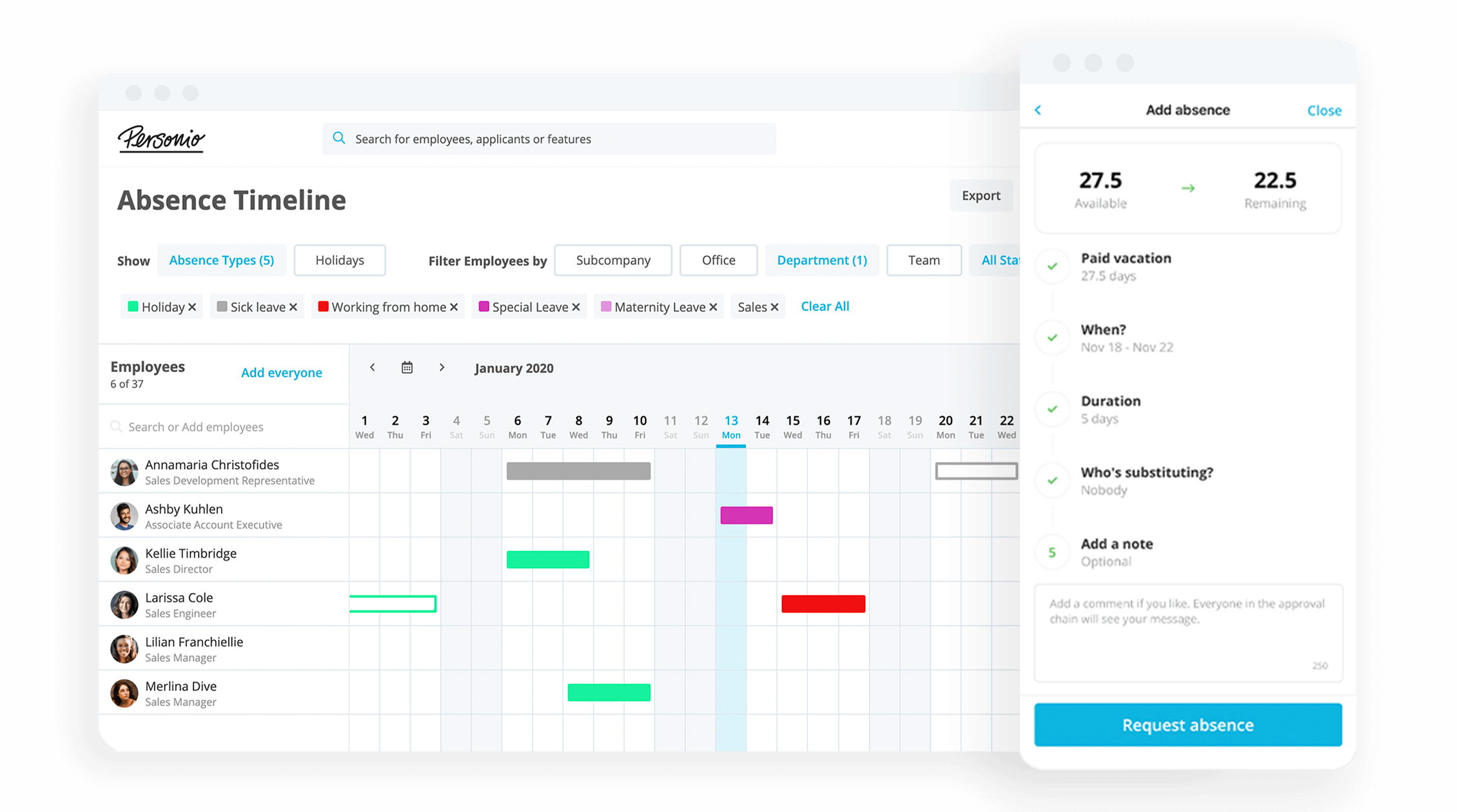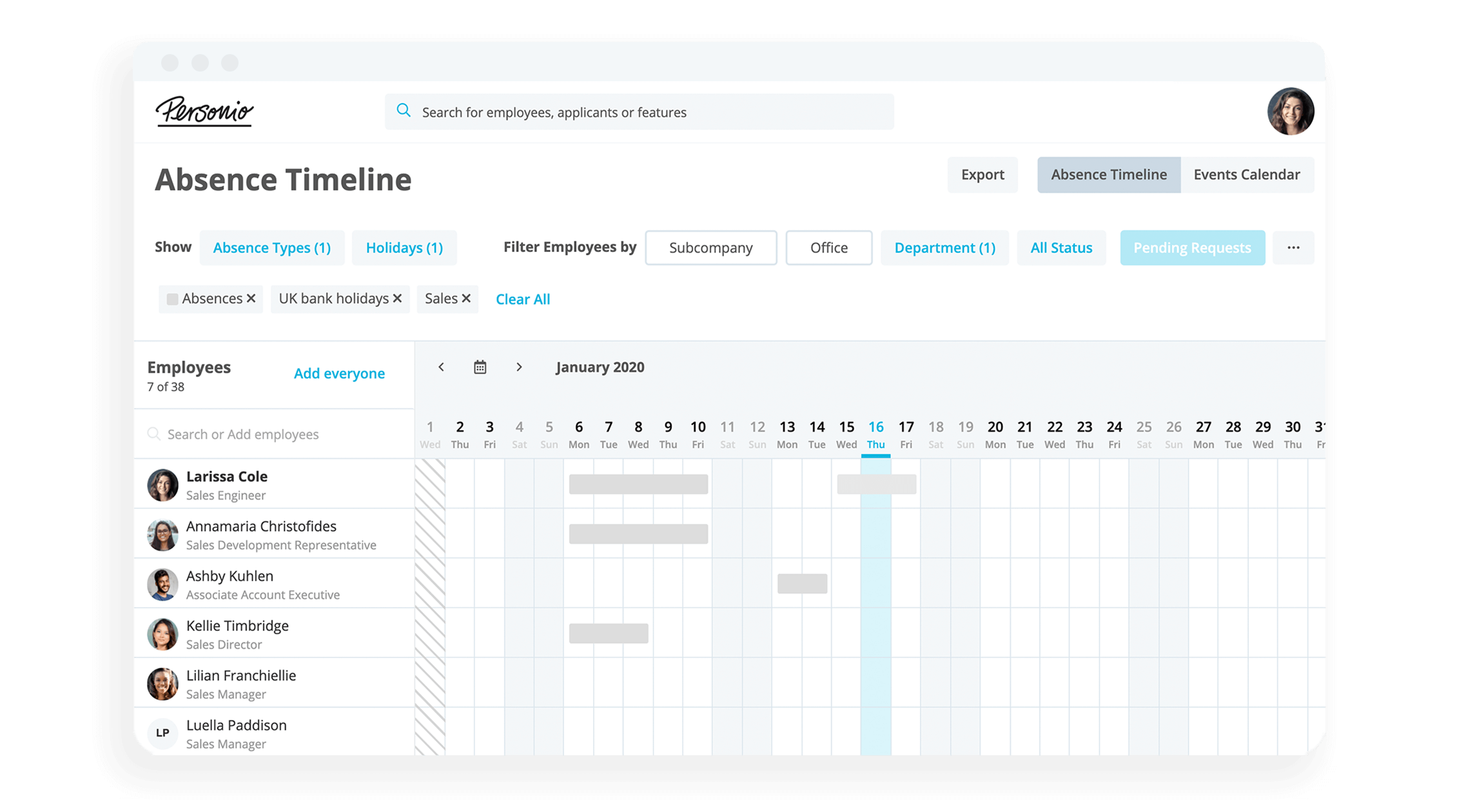Soft human resource management, otherwise known as soft HRM, involves putting your employees at the ‘centre’ of your organisation’s ‘universe’. In this article, we offer an explainer and concrete ways of implementing soft HR practices starting today.
Make way for more progressive HR practices with Personio today.
Contents
What is Soft HRM?
What’s the Difference Between Soft HRM and Hard HRM?
Can Soft HRM Lead to More Innovation?
How Can HR Leaders Implement Soft HRM?
Should You Implement Soft HRM Today?
What is Soft HRM?
Soft HRM involves treating your employees as a resource, and not a commodity. It is a progressive form of strategic human resource management that emphasises the importance of empowering employees to pursue their own professional interests and passions.
Essentially, it involves putting greater emphasis on your people, how they are treated and how they develop within the ecosystem your organisation and corporate culture provides.
The soft HRM model is designed to focus on your employees and their unique needs, and how you can design and implement programs to satisfy those needs.
What are the Components of Soft HRM?
Let’s break it down a bit further. If we look at soft HRM closely, we can start to see five major components take shape:
- Strategy – The long-term objectives of an organisation.
- Communication – How leaders and employees speak to one another.
- Engagement – The motivation of employees in how they work.
- Performance – How success is defined and how employees are rated.
- Reward – The ways employees are compensated for their work.
We’ll touch more on these later. Until then, the main thing to keep in mind is that it’s not a one-size-fits-all solution for every company. Likely, when it comes to these components, your organisation may lean in one direction more than the other (and that’s okay!).
What’s the Difference Between Soft HRM and Hard HRM?
Soft HRM is often understood in contrast to hard HRM. Where soft HRM focuses on the human element of work, hard HRM focuses on the work element of humans.
Hard HRM is defined as treating a workforce the same as a commodity — one that can be added to, subtracted from and moved around on a whim.
The difference between the two boils down to control. Soft focuses on employee empowerment to drive engagement and revenue growth, hard HRM focuses on micromanaging workforces and dictating what they do and how they do it (even if sometimes square pegs need to be forced into round holes).
As the more progressive model, soft has gained more favour over time. Hard HRM is viewed as an antiquated method that is no longer attuned to the modern needs of employees.
But, at the end of the day, it comes down to a values fit and the kind of HRM your management/leadership suite prefers.
Introduce More Modern HR Processes

Can Soft HRM Lead to More Innovation?
Soft HRM may be the key to more innovative organisational practices. Let’s take Google for instance. The iconic company places a great deal of emphasis on empowering its employees to pursue creative efforts that resonate with them.
Ultimately, this practice of widespread empowerment embeds a culture of innovation by trusting employees to pursue projects that benefit their own learning and development (and, subsequently, the creative genius of the company itself).
Can Soft HRM Lead to a Collaborative Culture?
It’s possible. If your organisation places an emphasis on collaboration, embedding a feedback culture or generally allowing your ‘natural-born collaborators’ to do their thing, it can quite easily turn into a culture of collaboration.
The trick is knowing how to ground this kind of culture in a sustainable way. That means making it a point of emphasis, trying to activate it throughout your workforce (through training sessions or courses) and then looking for on-the-ground examples of it in action.
How Can HR Leaders Implement Soft HRM?
What are some examples of soft HRM put into practice? Below, we’ll detail some of the popular methods, tactics and strategies that people leaders employ to make it a reality:
People Strategy – It’s often easiest to think of soft HRM as HR or organizational strategy that is baked into an overarching “people strategy”. The term itself implies the centrality of people in an organisation, making it one of the most pertinent examples out there.
HR Business Partnering – Soft HRM relies on business strategy and HR strategy going hand in hand. Having an HRBP, or at least an approach to one, is an essential part of building a relationship where people are front and centre.
Performance Processes – Performance conversations can go a long way. Instead of focusing on binary metrics, like good or bad performance, think about how you can expand to include a spectrum of performance ratings.
Development & Training – Top talent demands development. An HR function operating on the principles of soft HRM should actively seek our learning, development and training opportunities. And, incentivize staff to take them on.
Total Reward & Compensation – If your organisation hasn’t revisited your compensation methods in a while, try doing so through the lens of soft HRM. Salary isn’t everything, so your total reward strategy needs to be a people-centric mix.
Download our guide to putting your people strategy into place today.
Should You Implement Soft HRM Today?
While a more fixed model of hard HRM, one focused on productivity and profit, has its merits, it’s likely not in the best long-term interest of an organisation. Especially culturally, where a hard HRM approach can lead to high attrition rates, dwindling employee satisfaction and general apathy toward company success.
Abiding by the principles of soft HRM, on the other hand, is like leading with culture. Or, at least recognising the fact that your corporate culture should place emphasis on empowerment, growth and helping people get better at what they do — both to help the company, but also grow in their own careers.
So, should you implement it? That question may be best left up to your organisation. But, if you start to implement it, you may begin to wonder what took you so long! Book a demo today to see how Personio can improve your HR functions productivity, and save time so you can focus on what really matters: people.
Find More Time
For Soft HRM





